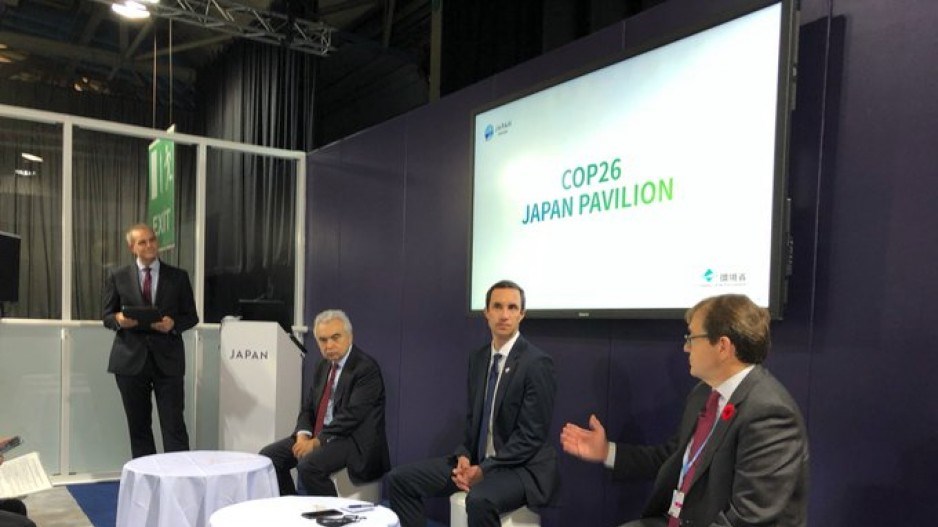Global warming can be held to 1.8 degrees Celsius, if pledges made by nations participating at the COP26 conference are followed through with action, says the International Energy Agency (IEA).
At the 2015 Conference of Parties (COP) in Paris, signatories to the Paris Agreement committed to enact policies to reduce greenhouse gas emissions to the point where global warming would be held to below 2 degrees Celsius. Holding it to 1.5 degrees would be even better, and reduce the severity of impacts of climate change, but it's a target that appears to be unachieveable, given current trajectories of global emissions.
In Glasgow, many signatories have increased their commitments to reduce greenhouse gases, with many pledging to reach net zero by 2050 and setting interim tsargets for 2030.
“We now are on a track, assuming the implementation of those commitments, of 1.8 degrees Celsius,” Canadian Natural Resources Minister Jonathan Wilkinson said Friday from Glasgow in a media call with Canadian journalists.
“That’s not 1.5. We need to do more, if we are going to avoid some of the significant impacts associated with a changing climate, but it is an enormous step forward. Part of what we need to do now – everybody needs to do – is develop the details and concrete climate plans that countries like Canada have.”
In his speech at COP26, Prime Minister Justin Trudeau highlighted Canada’s commitments to phase out coal power by 2030 and cap emissions in the oil and gas sector.
Trudeau lobbied for a global pledge to phase out thermal coal and for other nations to get on board with pricing carbon. Only about 20% of the global emissions are taxed, he said.
Of the nearly 200 countries attending COP26, only 27 have some form of carbon pricing, in the form of cap-and-trade, emissions trading or a direct tax.
But a number of other important pledges have been made at COP26. They include:
- 23 additional countries signing a pledge to phase out thermal coal for power generation;
- more than 100 countries pledging to reduce methane emissions 30% by 2030;
- Canada and 24 other countries or national financial institutions agreeing to end new direct public support for international fossil fuel projects by the end of 2022.
Canada has invested in fossil fuel projects outside of Canada through Export Development Canada, which was set up to help Canadian companies finance investments in other countries.
Ending the use of coal for power is the single most important “pathway” to reducing global GHGs, since it is the single largest contributor, accounting for 46% of global emissions and 72% of emissions from power generation.
Ontario has already phased out coal, and Alberta, Saskatchewan and New Brunswick are obliged under Canadian law, to phase it out by 2030.
“Coal is being consigned to history today at COP26,” a COP26 official news release stated earlier this week.
That may be a bit of an over-statement, given that the U.S., China and India – some of the world’s biggest coal power users -- have not signed the agreement to phase out coal. India has, however, pledged to net zero by 2070.
One of the commitments made in 2009 was for developed countries to help developing countries with their own energy transitions. They promised $100 billion by 2020, but have fallen short. Wilkinson and Germany’s Environment minister, Jochen Flasbarth, were asked by the president of COP26 to co-chair a $100 billion financial delivery plan.
Wilkinson said about $80 billion is now committed and expects the full $100 billion in commitments by 2023. Canada’s share of that commitment is $5.3 billion over five years.
"They knew that to have a successful COP, we would need to be able to show the developed world, in concrete ways, that this commitment would be achieved," Wilkinson said. "Many developed countries stepped up and increased their level of ambition."
One concept being discussed at COP26, but with no concrete commitments or plans, is a carbon border adjustment tariff -- something the European Union is planning to introduce.
Countries, like Canada, that have put a price on carbon emissions, would tax imports from those countries, like Australia, that don't have carbon pricing.
Steven Guilbealt, Canada's new Environment minister, said carbon border adjustments are not on the table at COP26.
"In terms of the mechanisms, it is not part of the Paris Agreement," Guilbeault said. "It's not a direct mechanism that is happening through the Paris Agreement, but it is certainly part of the grand conversation that we are having at the international scene on climate change."
It's unlikely Canada would implement a carbon border adjustment tax without the U.S. on board, since it is Canada's largest trading partner.




